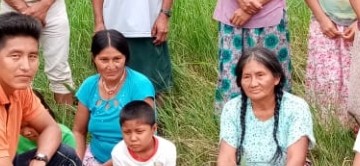The Covid-19 crisis is a unique combination of two daunting challenges, says economic historian Victor Gay. Lockdown restrictions, triggered by a health crisis, have themselves created an economic crisis. How will these crises interact? As the world faces this critical juncture, his TSE Inaugural Lecture argued that we have much to learn from catastrophic events in the past.
Epidemic risks were almost part of everyday life until very late in the 20th century. The Black Death probably killed around half of the European population. The Columbian Exchange wiped out nearly 90% of the Amerindian population. Even in 19th-century New York, there was some kind of epidemic crisis every decade or so. But in terms of its initial spread, rate of transmission, and severity, the 1918-1919 influenza is the natural historical counterpart to today’s health crisis.
Influenza in 1918-19
Focusing on US cities, Clay et al (2019) investigate why influenza hit some areas harder than others. Using infant mortality, illiteracy, and proximity to coal-fired power plants as proxies, they show that health and economic conditions, and environmental pollution, had an important impact on the distribution of excess mortality. Further research across the world has found that influenza was more deadly in locations with poor health, income, and air quality. This suggests that Covid-19 is unlikely to be a leveller: if anything, it will aggravate socioeconomic disparities.
Comparing the 1901-1929 growth trajectories of 43 countries, Barro et al (2020) find that a 1 percentage point increase in flu death rates was associated with a 3% fall in real GDP per capita. Overall, the pandemic represented a 6% decline in real GDP per capita. This is slightly less than what we expect from Covid-19. Other studies looking at medium-run effects in Italy and Denmark find that there was a recession but it was broadly over by the early 1920s.
Is there a health-economy tradeoff?
During the 1918-1919 influenza pandemic, non-pharmaceutical interventions (NPIs) in the US included school closures, quarantines, and bans on public assemblies. Correia et al (2020) find that such measures were quite efficient in flattening the mortality curve. High-NPI cities experienced a 45% decline in peak mortality relative to the mean.
Looking at manufacturing jobs and bank assets, Correia’s study finds little evidence that NPIs hurt the economy. By reducing transmission and mortality, NPIs may even have boosted the economy by allowing more people to return to work. But the analysis is not clear cut. For example, limited NPIs might have been very efficient in protecting prime-age workers, for whom the influenza was much more deadly than Covid-19.
Long-term scars
In his “fetal origins” study, Almond (2006) finds that Americans born towards the end of the 1918-19 epidemic suffer from weaker socioeconomic outcomes many decades later. The 1960-1980 disability rates, high-school dropout rates, and income of those who were in utero during the influenza pandemic suggest it had lifelong scarring effects. These findings are supported by subsequent studies in Taiwan, Japan, Sweden, Switzerland, and Brazil. A possible explanation is that parents may have reallocated resources toward healthier siblings.
Influenza may have had many other long-term effects. Studies in Scandinavia appear to show a drop in fertility during the pandemic, followed by a baby boom. Recent papers suggest that the intensity of influenza may also be correlated with increased voting for extremist parties (such as the Nazis in Germany); lower trust in institutions and politicians; higher inequality (in Italy); and more internal mobility (in India).
The Great Depression
To understand today’s economic challenges, the Great Depression may be a more useful point of comparison. Many studies show long-run scarring effects through in utero exposure to income shocks in 1929-1930.
Moulton (2017) compares the income in 1940 of those who entered the labor market before and after 1930. He finds 15% earnings penalties for the less-educated in the hardest-hit states. Recent research suggests this long-run scarring also created occupational and residential displacement for younger people, especially in rural areas.
More recently, research in the US suggests that people who entered the labor market after the global financial crisis (2009-2015 entrants) have 2-3% lower employment rates compared to pre-crisis entrants. Only 2009 entrants have lower earnings (2%), however, so employment scarring may be more persistent than wage scarring.
Lessons from the past
We must be modest about the limitations of historical comparisons; today’s context is very different. For instance, in 1918-19 there was much less room for strategic choices about education. School closures and other NPIs were less stringent and disruptive; the standard of education and its returns were much lower. The impact of Covid-19 on gender inequality is a big problem today, especially for working mothers, but in 1918 female labor force participation was much lower.
Nevertheless, the influenza pandemic and the Great Depression offer important lessons. If nothing is done, any health-economy tradeoff will be especially acute in the current context. People with low socio-economic status – often women and minorities in high-contact jobs – compound many risks. Young jobseekers will be hit particularly hard by the economic downturn. These groups will together bear a disproportionate burden of the Covid-19 crisis, which may inflict scars that last for generations.
TSE Mag #21 Winter 2021




